Huawei Cloud Stack 8.6 Announced, Powering Your Leap to Intelligence with Data+AI
Sep 19, 2025
On September 18, 2025, during HUAWEI CONNECT 2025, Huawei hosted the Global Hybrid Cloud Data-AI Forum. The theme of the event was "Power Your Leap into Intelligence with Data+AI." At the event, Sean Xiao, President of Huawei Hybrid Cloud, announced the release of Huawei Cloud Stack 8.6. This latest version introduces eight major upgrades across four key areas: cloud foundation, data+AI synergy, application modernization, and streamlined O&M. These advancements are dedicated to helping enterprises accelerate their intelligent transformation through leading technologies and services.
Today, AI is revolutionizing productivity across industries, and the synergy between AI and data has become the core driving force behind unprecedented transformation. In his opening remarks, Charles Yang (Yongui), Senior Vice President of Huawei and President of Huawei Cloud Global Marketing and Sales Service Department, outlined Huawei Cloud's strategy to build products and competitive advantages around three core pillars: computing power, algorithms, and data. He highlighted key initiatives such as launching the CloudMatrix 384 supernode to meet the growing demand for advanced computing power; leveraging extensive data resources and targeting practical use cases to help customers build tailored vertical models and AI agents; and pioneering innovation across the entire data lifecycle, including exchange, storage, processing, and security, to unlock the full value of data assets. Mr. Yang emphasized Huawei Cloud's commitment to building solid data infrastructure, opening AI models and tools, and advancing capabilities in data governance and trusted data spaces, a mission he stated is central to powering the success of digital and AI transformation for enterprises.
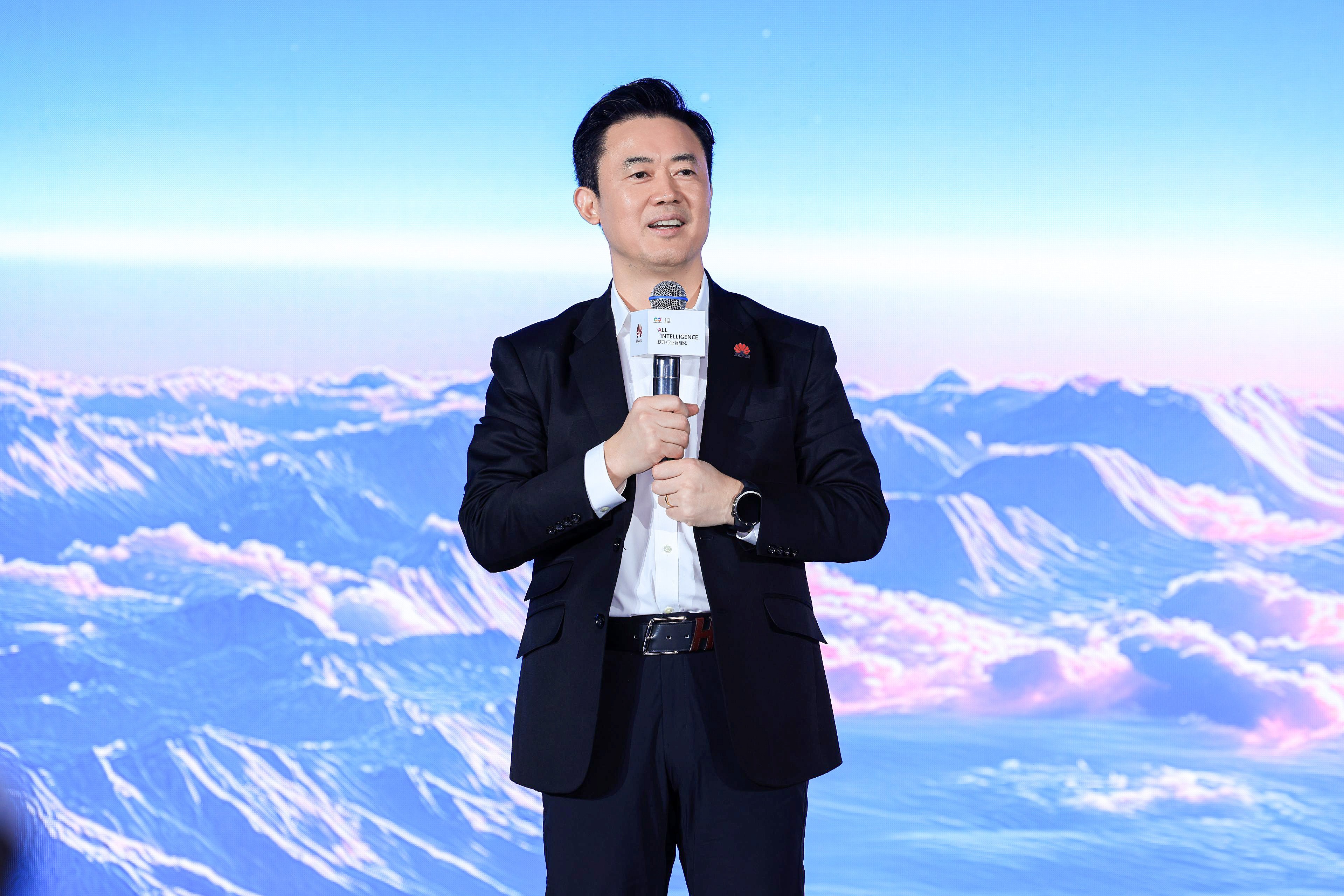
Charles Yang (Yongui), Senior Vice President of Huawei and President of Huawei Cloud Global Marketing and Sales Service Department
Huawei Cloud Stack 8.6 released with eight major upgrades, helping enterprises build an integrated Data+AI engine
Industry pioneers are accelerating their digital and AI transformations. Sean Xiao noted that this shift is occurring on multiple fronts simultaneously, with intelligent upgrades reshaping industries in many profound ways. To power this change, Huawei Cloud Stack is committed to helping enterprises build an integrated Data+AI engine, which is essential for driving transformation.
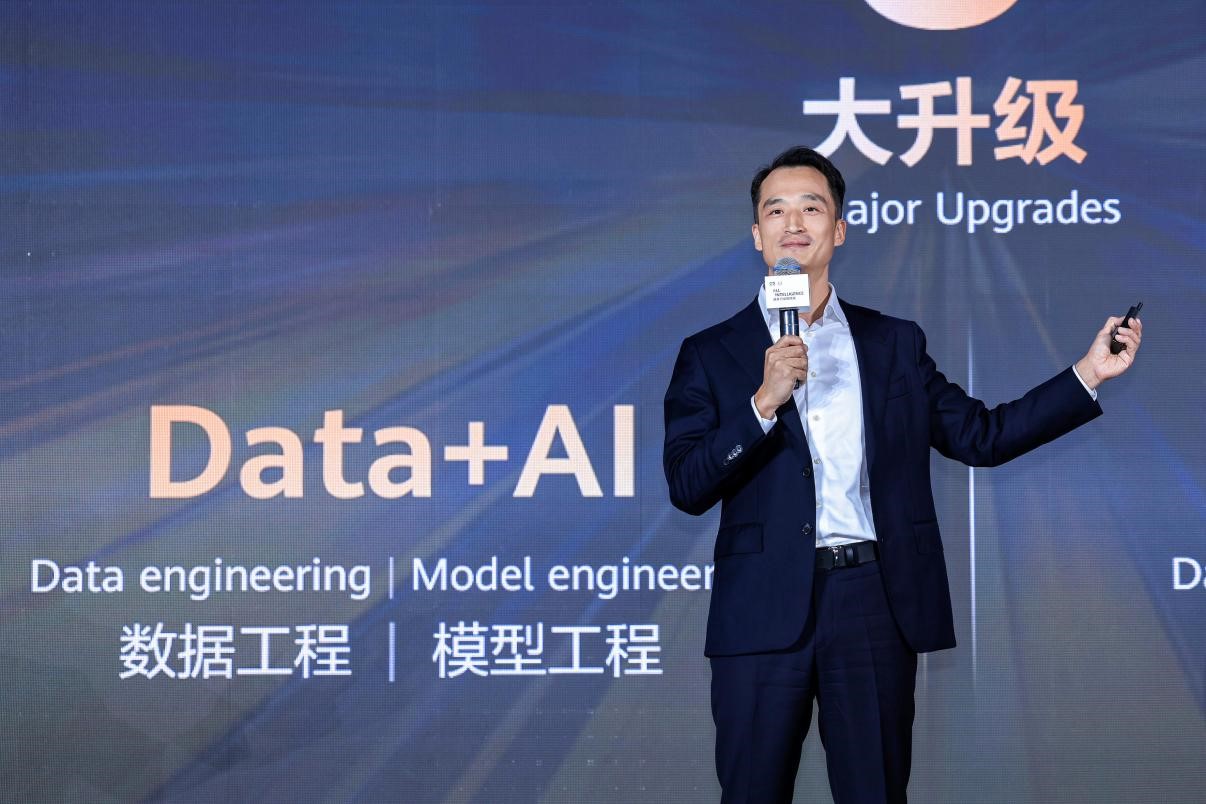
Sean Xiao, Vice President of Huawei Cloud and President of Huawei Hybrid Cloud
At the forum, Sean Xiao officially announced Huawei Cloud Stack 8.6. This new version delivers eight major upgrades in four areas: cloud foundation, data+AI, application modernization, and streamlined O&M.
First, for the cloud foundation, Huawei Cloud Stack 8.6 is fully compatible with CloudMatrix 384, Huawei Cloud's AI supernode solution. This integration allows enterprises to build robust AI computing centers on-premises. The new platform also significantly improves compute utilization and management, accelerates model deployment, and unifies operations and maintenance for hardware, software, and AI jobs, thereby significantly enhancing compute efficiency.
Additionally, Huawei Cloud Stack 8.6 supports larger cluster deployments and more efficient container scheduling, enabling the quick provisioning of up to 50,000 Pods in a single region. The new version also introduces enhanced high availability (HA), including an intra-city dual-AZ solution that delivers a Recovery Point Objective (RPO) of mere seconds and a Recovery Time Objective (RTO) of minutes. This HA architecture allows single-AZ deployments to be seamlessly upgraded to dual-AZ.
Second, for data+AI synergy, Huawei Cloud Stack 8.6 offers enhanced data and model engineering capabilities. Its data engineering focuses on three key areas: all-domain data labeling and global visibility through a converged data lake; upgrading the intelligent data toolchain; and building a data space hub, all aimed at ensuring secure and manageable data circulation.
Model engineering is powered by ModelArts, Huawei Cloud's one-stop AI development platform. The platform supports a range of AI foundation models and workflows, empowering the entire process of incremental training, fine-tuning, reinforcement learning, model evaluation, and deployment. It helps enterprises efficiently build their own custom models.
Third, for application modernization, the focus is on databases and software development. For databases, Huawei Cloud Stack 8.6 has introduced a distributed architecture for GaussDB featuring three-layer pooling, significantly enhancing database performance. It also delivers an enhanced anti-ransomware solution along with a strong-consistency data synchronization solution for enhanced data protection.
For software development, CodeArts Doer extends intelligence from coding to all six major phases of R&D: project management, product management, development, building, testing, and deployment, helping boost R&D efficiency.
Finally, for streamlined O&M, Huawei Cloud Stack 8.6 has introduced significant upgrades, such as faster fault detection and demarcation, and faster fault recovery through self-healing and one-click DR failover.
Additionally, Sean Xiao mentioned that Huawei Cloud is also working with customers to jointly develop three AI assistants for knowledge Q&A, data retrieval, and fault diagnosis. These intelligent assistants are designed to help O&M staff boost their efficiency.
At the forum, Sean Xiao released a white paper titled "Huawei Hybrid Cloud O&M Modernization – Core Capabilities and Best Practices", which provides insights into enterprise O&M modernization methodologies and major trends.
Joining hands with customers to pioneer new paradigms in digital and AI transformation
So far, over 5,500 customers worldwide have chosen Huawei Cloud Stack to power their innovation on cloud. With a deep focus on key industries, Huawei Cloud Stack partners with industry leaders to pioneer digital and AI innovation, setting new benchmarks in many sectors.
Zhang Liming, Deputy General Manager of the Operations and Maintenance Center at CHN Energy Information Technology Co., Ltd., shared CHN Energy's journey in driving its AI+Energy strategy. She emphasized that simply stacking data together is not enough to unlock its value. Instead, it requires a systematic transformation involving technology, management, and corporate culture. With the goal of improving data governance efficiency and driving value creation, CHN Energy established a "171" data management capability framework, a "dual-domain leader" data governance model, and a "1+M+N" big data system. To address challenges such as the difficulty of integrating multi-source heterogeneous data from the power generation industry, varying data quality, and a scarcity of high-quality, curated datasets, CHN Energy built a unified, converged data lake powered by Huawei Cloud Stack. This data lake now hosts over 700 TB of data specific to the power generation industry. Through rigorous data engineering, CHN Energy has curated 450 GB of high-quality datasets. This has enabled the evolution from "raw data" to "bare minimum datasets" and then to high-quality, curated datasets, laying the foundation for effective, actionable AI.
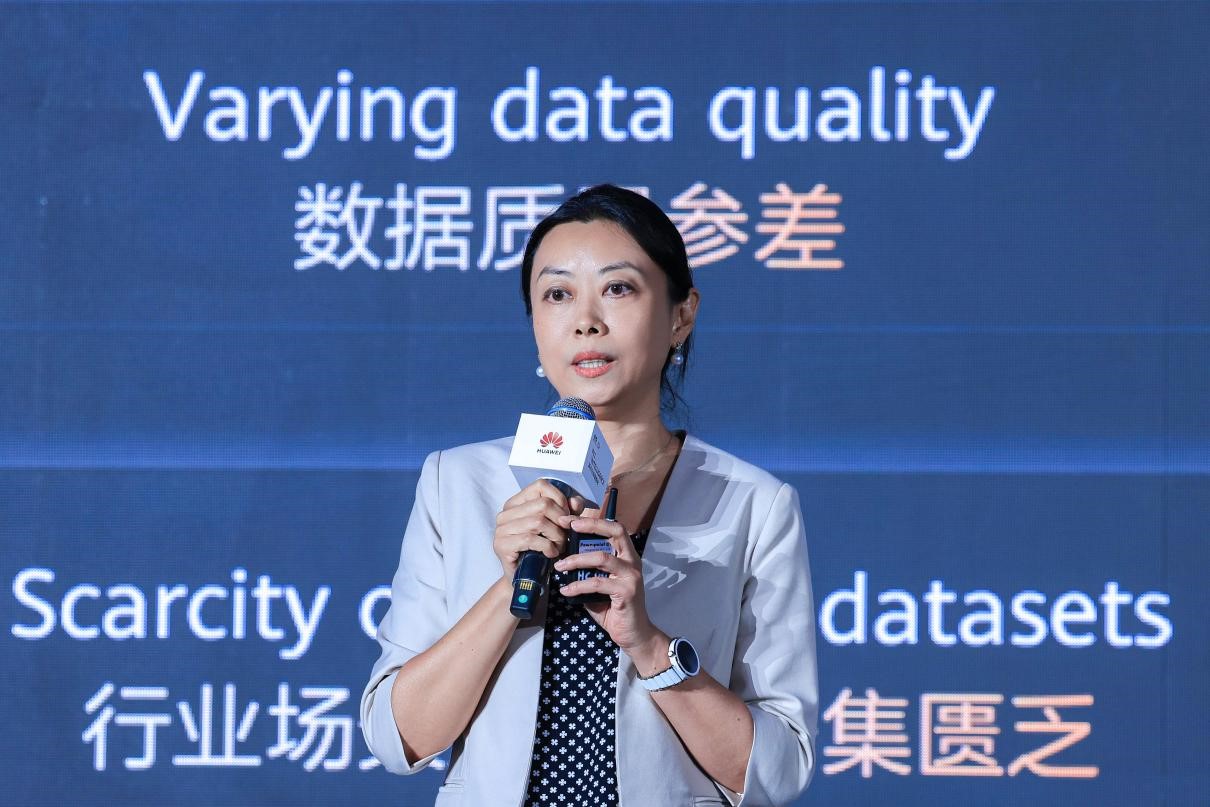
Zhang Liming, Deputy General Manager of the Operations and Maintenance Center at CHN Energy Information Technology Co., Ltd.
Li Yulong, Deputy Director of the FinTech Division's Architecture Dept at the Postal Savings Bank of China (PSBC), delivered a keynote speech titled "Driving Digital and AI Transformation with Leading AI Compute" at the forum. He talked about the close collaboration between PSBC and Huawei in building a full-stack AI computing infrastructure based on Huawei Cloud Stack. Guided by a "1+2+3" top-level design for AI computing, PSBC has developed one set of data specifications, two major dataset systems—financial and non-financial, and three core platforms—compute management, developer tools, and public services. Together, these provide unified compute resource management and AI platform capabilities for PSBC's own Youzhi Model, supporting the entire bank's model training and AI application development. The results have been significant: these platforms now power over 230 intelligent applications across frontend, mid-end, and backend operations. These include an intelligent customer service for mobile banking, a trading bot, and a loan approval assistant. The trading bot, for instance, handles inter-bank trading inquiries and matchmaking, reducing the average duration of a single inquiry to just 22 seconds—approximately 94% faster than human agents—thereby significantly enhancing trading efficiency.
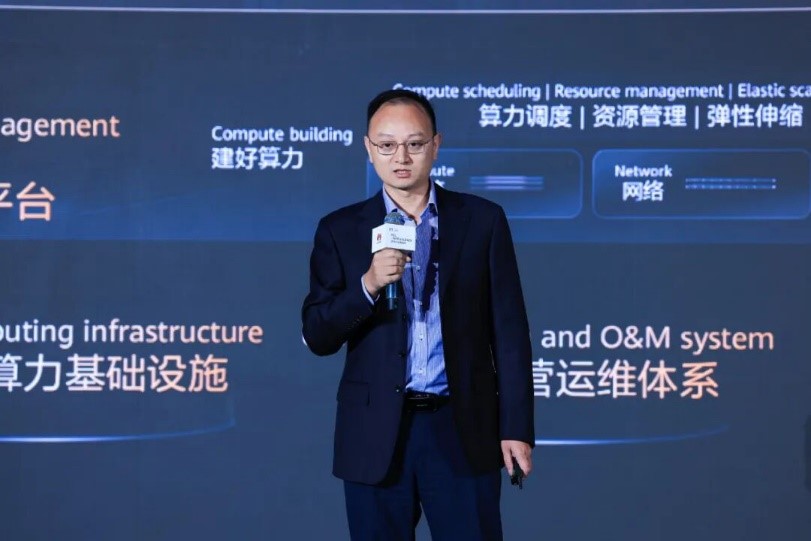
Li Yulong, Deputy Director of the FinTech Division's Architecture Dept at the Postal Savings Bank of China (PSBC)
Dai Hu, Director of the Business Management Department of Dongfeng Motor Group, told the audience that Dongfeng Motor built a modernized digital platform on Huawei Cloud Stack, covering everything from application architecture design and cloud-native development, to efficient asset management and circulation, marking a solid transition from essential cloud adoption to application modernization. One key component is the Luban development management platform, built on Huawei Cloud CodeArts. Luban enhances end-to-end R&D efficiency across all phases: requirement management, coding, building, deployment, testing, and performance evaluation. It enables efficient, collaborative coding involving thousands of developers working from different locations on critical vehicle-mounted software, including cockpit systems and intelligent driving solutions.
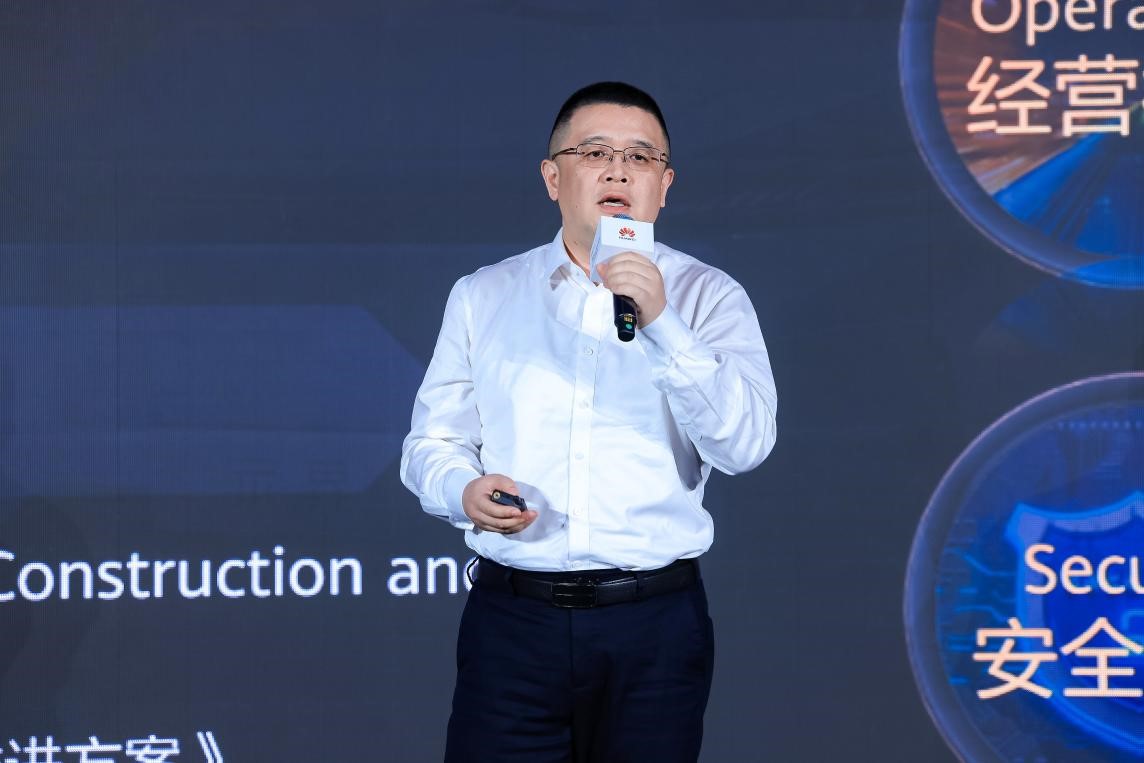
Dai Hu, Director of the Business Management Department of Dongfeng Motor Group
In his speech, Daniel CHOW Kai-hang, a senior engineer from the Digital Water Office of the Water Supplies Department (WSD) of the Hong Kong SAR Government, highlighted the department's partnership with Huawei Cloud Stack. Through this collaboration, the WSD built the Hong Kong government's first Huawei satellite cloud, which powers a comprehensive smart water management system. This system is critical for securing a reliable water supply for the city's 7.5 million residents. It significantly enhances the operational and maintenance efficiency for Hong Kong's vast network of over 8,400 km of water pipelines and 450 water processing plants. This achievement is now a global benchmark for water supply agencies seeking to improve efficiency and resilience.
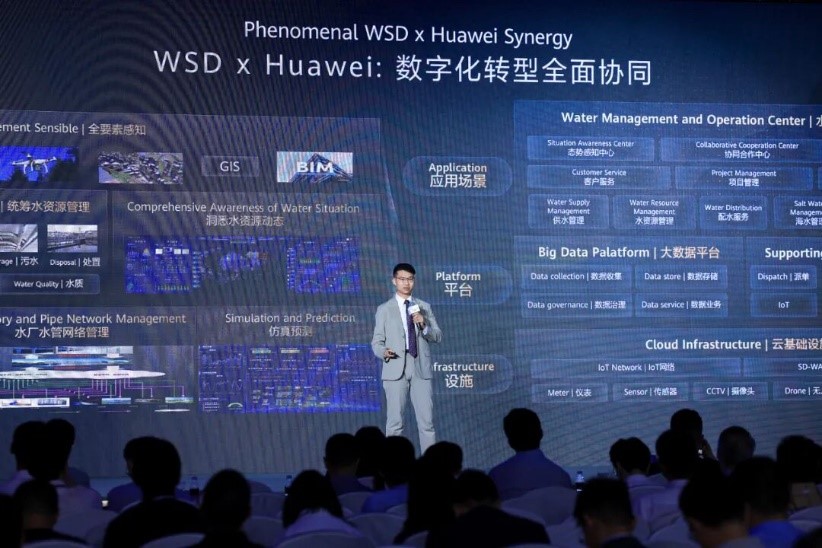
Daniel CHOW Kai-hang, a senior engineer from the Digital Water Office of the Water Supplies Department (WSD) of the Hong Kong SAR Government
Near the end of the forum, the 2025 Global "Dive into Cloud Polaris" Awards Ceremony honored global customers who have made outstanding contributions to advancing Huawei hybrid cloud's technical competitiveness, innovation, and exploration of new business models. Winners of this award represented a diverse range of sectors, including energy, healthcare, industrial manufacturing, transportation, government, and finance.
Looking forward, Huawei Cloud Stack is dedicated to building leading cloud infrastructure by continuously enhancing its competitiveness in cloud platforms and services tailored to industry needs. Its mission is always to help enterprises build, utilize, and govern the cloud with confidence.


